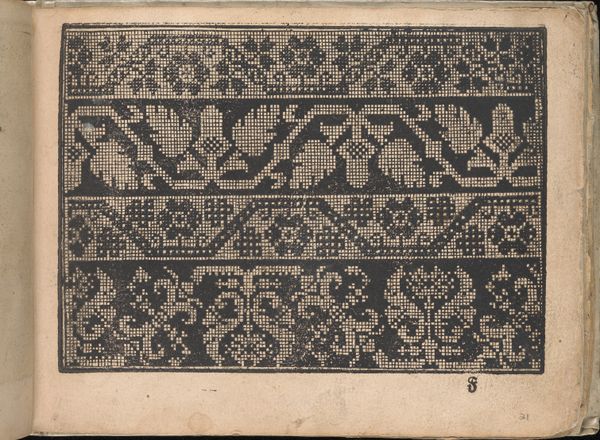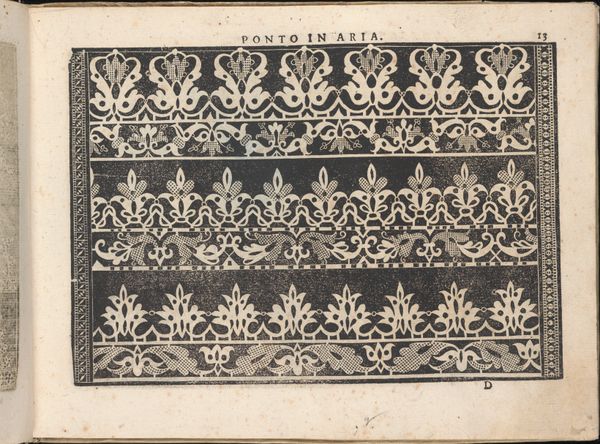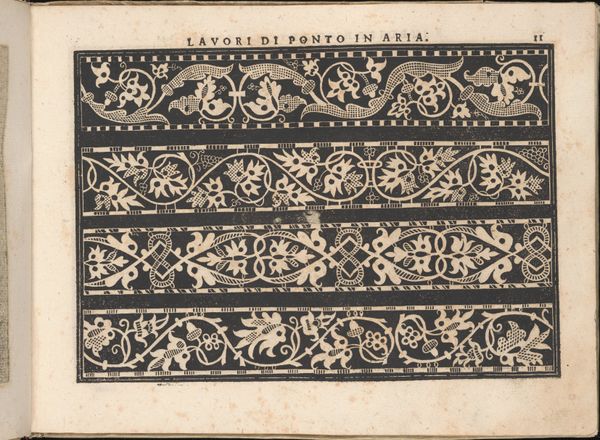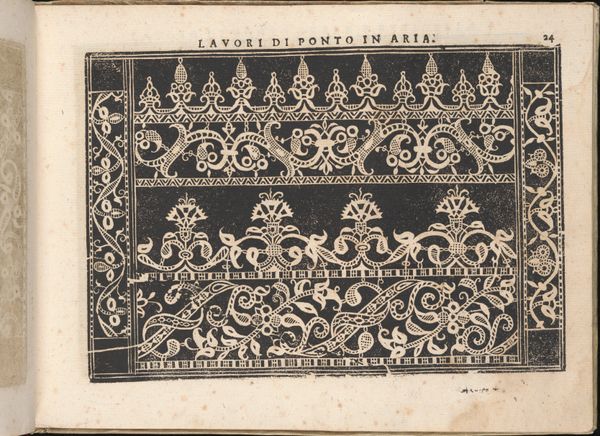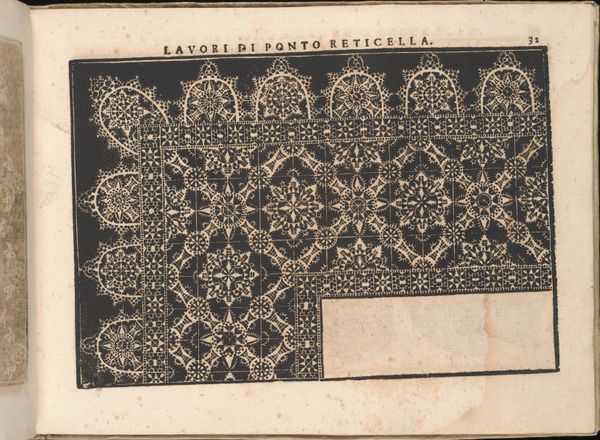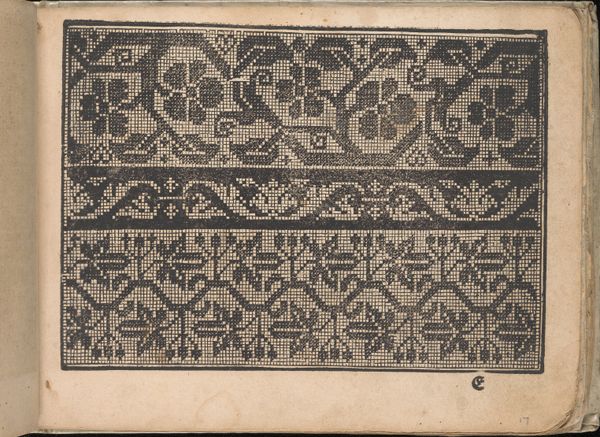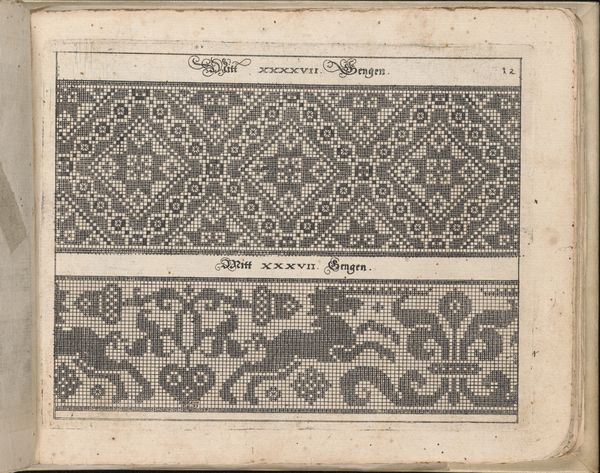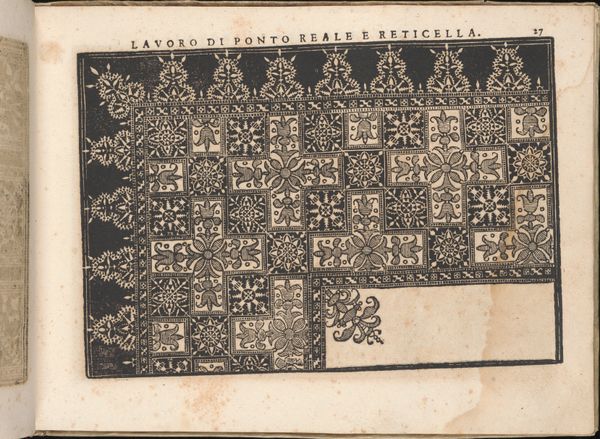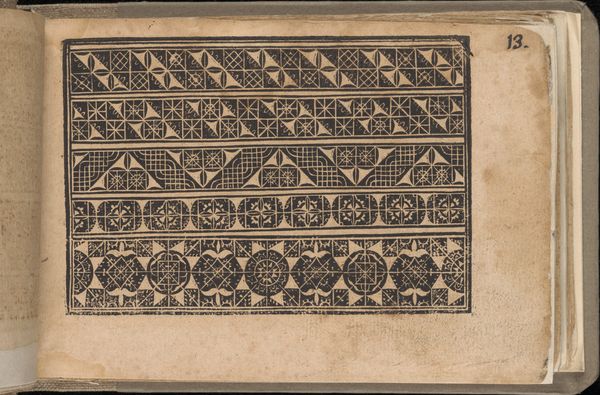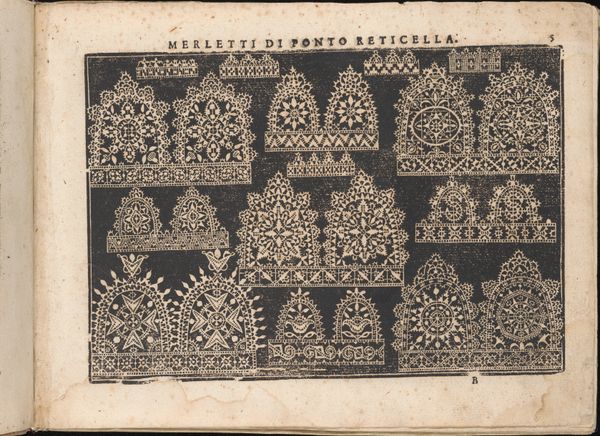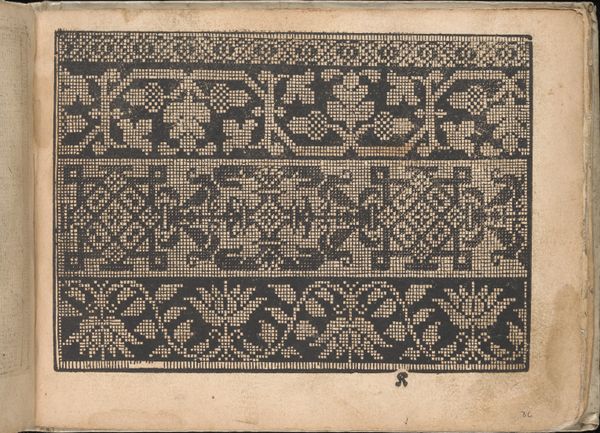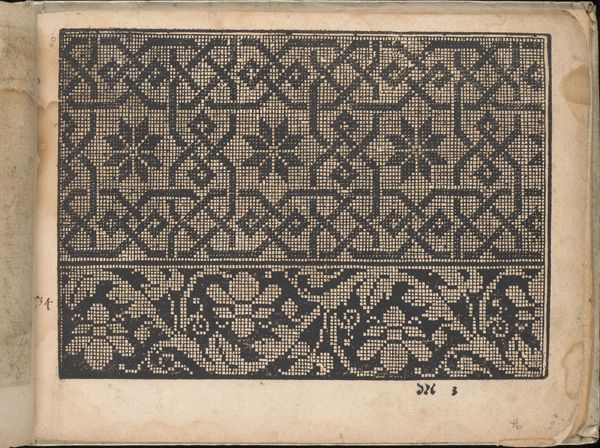
Fiore D'Ogni Virtu Per le Nobili Et Honeste Matrone, page 19 (recto) 1610
0:00
0:00
drawing, ornament, print, paper, woodcut
#
drawing
#
ornament
# print
#
book
#
flower
#
paper
#
geometric
#
woodcut
#
line
#
decorative-art
#
italian-renaissance
Dimensions: Overall: 7 7/8 x 10 1/4 in. (20 x 26 cm)
Copyright: Public Domain
Curator: This page comes from "Fiore D'Ogni Virtu Per le Nobili Et Honeste Matrone," created around 1610 by Isabella Catanea Parasole. The book is full of these intricate designs and patterns. Editor: Immediately, I'm struck by the sharp contrast and density of detail. The shapes interlock to form horizontal bands that almost vibrate on the page. Curator: It’s a woodcut print on paper, essentially a manual. Parasole designed these specifically as templates and designs for lacemakers and embroiderers, which offers insights into artistic labor and craft during the Renaissance. Editor: These repeating floral and geometric motifs...they're more than just decoration. The flowers might reference the virtues alluded to in the title, acting as symbolic prompts for reflection in domestic needlework, a common practice for women at the time. The symmetry itself suggests order and balance. Curator: Exactly. And consider the materiality here. The woodcut printing process would have been relatively accessible, enabling a wider distribution of designs. Parasole, as a female artist and businesswoman, actively shaped the market by supplying pattern books for luxury crafts like lace, blurring art and commercial activities. Editor: What a fascinating convergence: nature translated through human intellect into a decorative image meant for replication! These floral and geometric symbols would've spoken directly to contemporary viewers, embedding notions of feminine virtue, beauty, and domestic harmony within the physical creation of lace itself. Curator: That’s insightful. It moves beyond surface appeal into encoding deeper social meaning into the textiles that adorned daily life. Parasole not only provided the designs but enabled women to engage in financially gainful artistry. Editor: It reminds me of mandalas: these patterns encourage focus through repetition. So, it's functional, financial, artistic, and maybe even meditational all at once. Curator: Yes, exactly! This piece demonstrates that art and craft during this period were very closely linked. Production methods significantly affected artistic distribution. Editor: Examining the symbols with a look to cultural associations helps us connect today with how these objects may have functioned on physical and psychological levels for Renaissance viewers.
Comments
No comments
Be the first to comment and join the conversation on the ultimate creative platform.
